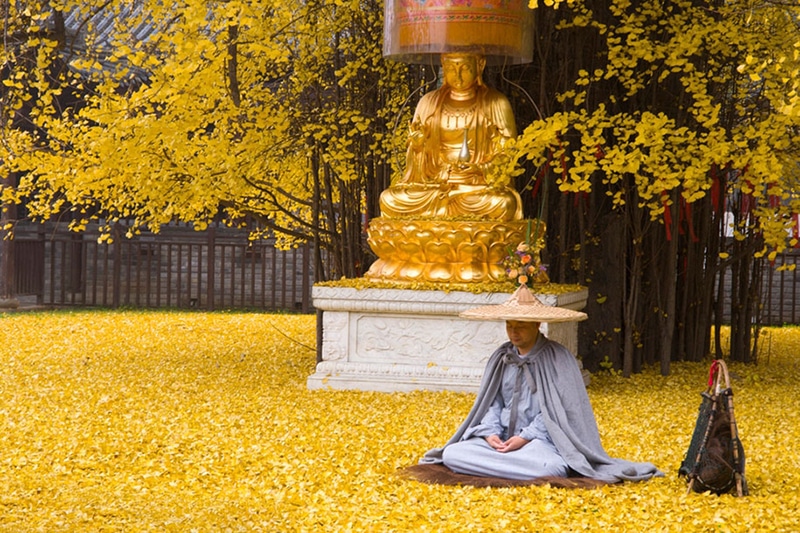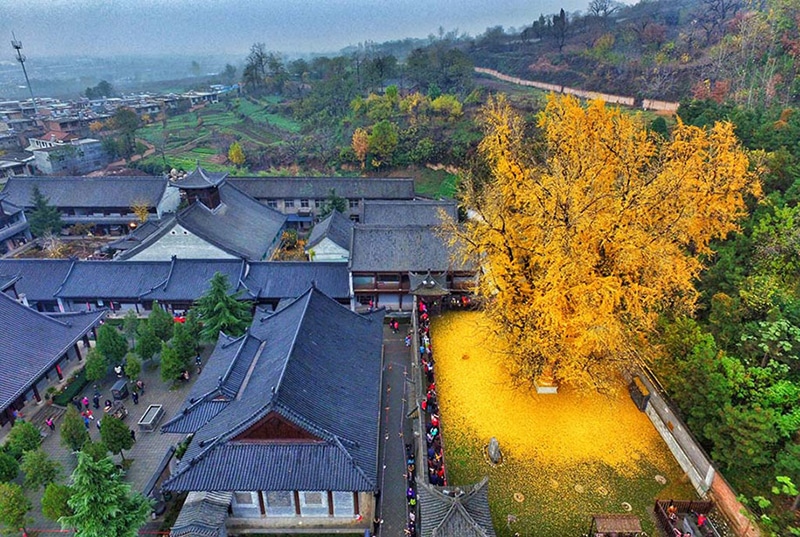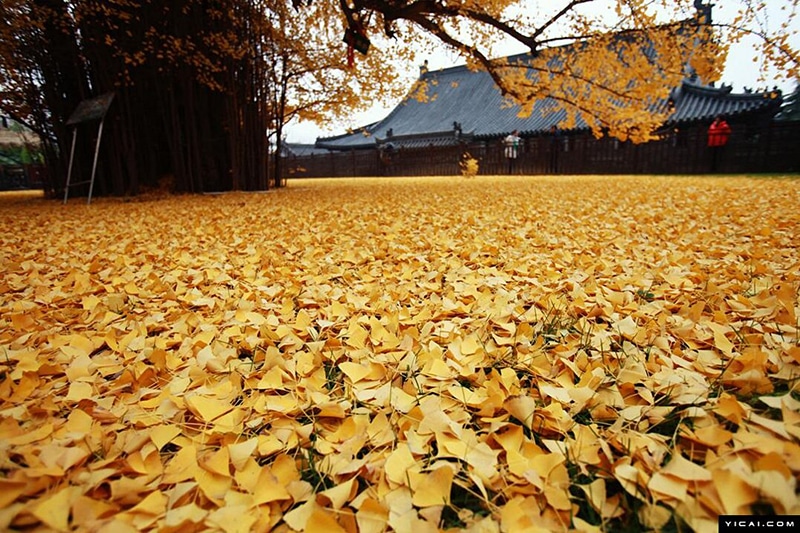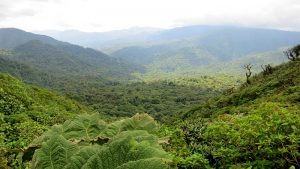In autumn, the gingko tree sheds its golden leaves in preparation for winter and gifts us with a magical, golden landscape. A great example of this wonderful sight has been reoccurring every year (for 1,400 years!) at the Gu Guanyin Buddhist Temple in the Zhongnan Mountains region of China.
Every autumn, this treepours like a golden rain into the surrounding green meadows. A seasonal phenomenon that attracts hundreds of tourists every year.

This tree was planted 1,400 years ago by the emperor Li Shimin, founder of the Tang dynasty (618-907 AD).
Ginkgo biloba trees originate in China and are renowned for the bright yellow color they assume in autumn. The shape of the leaves is also unusual: similar to small fans, they recall the shape of maidenhair fern leaves (Adiantum capillus-veneris); this is why Ginkgo is also commonly called “maidenhair tree”.

In China and Japan, the plant is also used in cooking and for medicinal purposes: it is thought to have beneficial effects, especially for blood circulation.
Thanks to its bright colors, it is often used as a decorative plant, especially in urban areas: it has proven to be particularly resistant to pollution, fungi and insects, and is an effective “smog eater”. In Japan, the Ginkgo biloba has become the symbol for the city of Tokyo.

The Ginkgo tree can reach 100 feet in height.

It is often considered a “living fossil” because it is thought to have remained virtually unchanged for the past 250 million years, surviving repeated climate changes unscathed.








